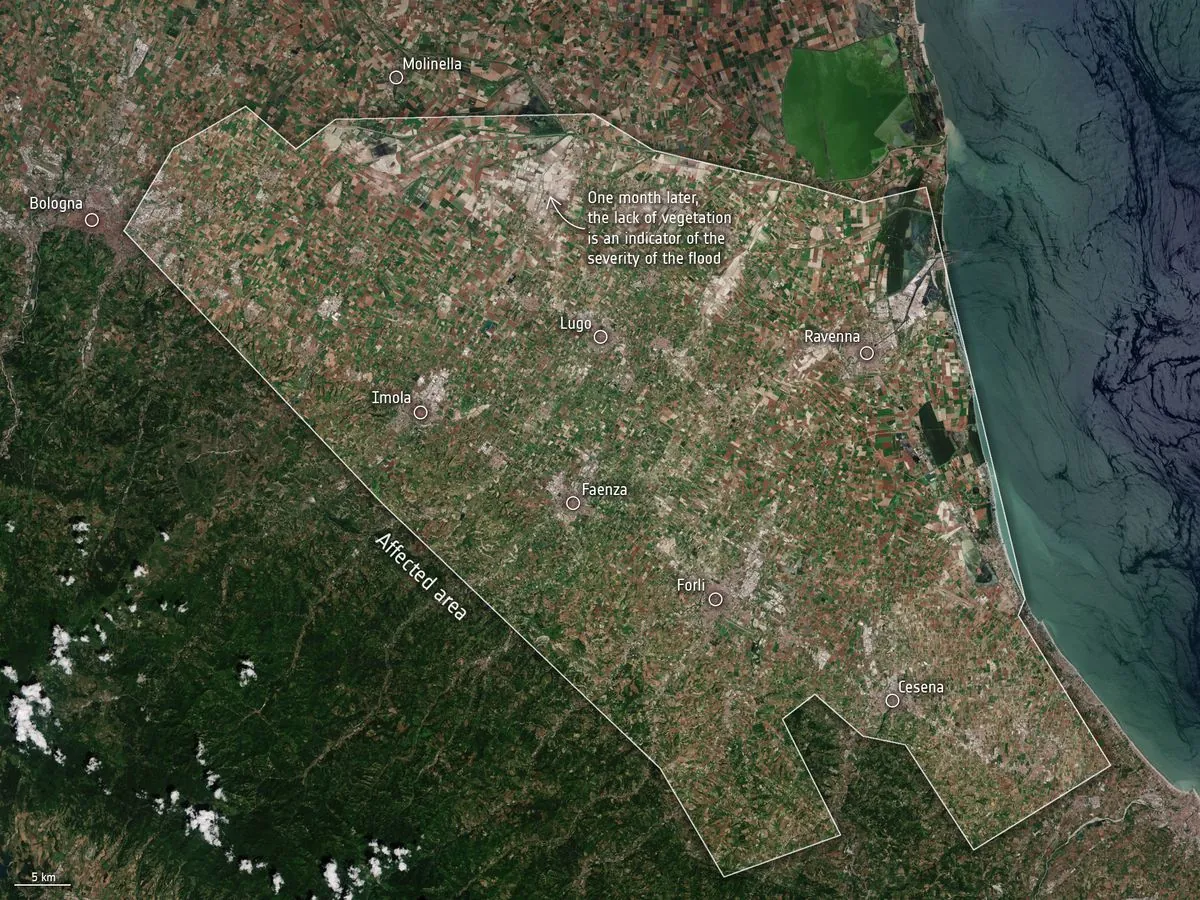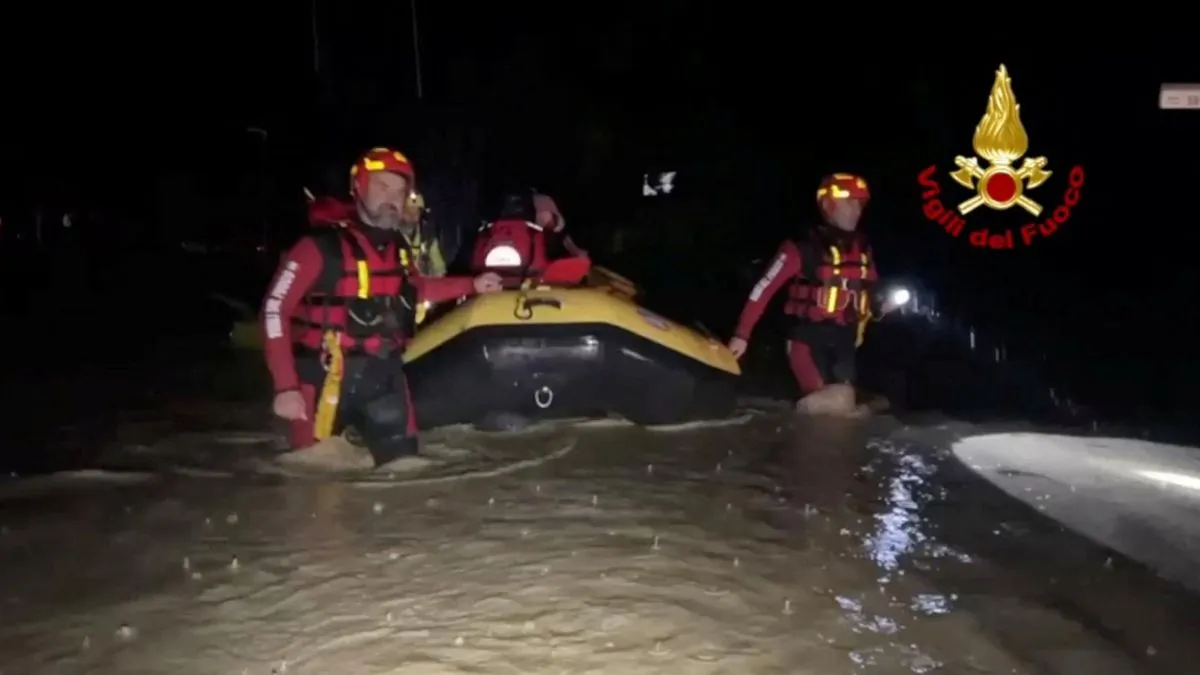Severe Floods Strike Emilia-Romagna, Echoing Last Year's Devastation
Northern Italy's Emilia-Romagna region faces severe flooding, prompting evacuations and school closures. The event mirrors the catastrophic floods of May 2023, with rescue operations underway.

In a concerning turn of events, the Emilia-Romagna region of northern Italy is once again grappling with severe flooding. The deluge, which began on September 18, 2024, has led to widespread evacuations and school closures, reminiscent of the catastrophic floods that struck the area in May 2023.
Irene Priolo, the acting regional president, reported that approximately 1,000 individuals have been evacuated. While this number is significant, it pales in comparison to the mass evacuations necessitated by last year's floods. The town of Lugo, with a population of around 30,000, has been particularly affected, with authorities mandating the evacuation of all ground-floor residences due to the Senio river breaching its banks.
The current flooding is part of a larger weather system that has been causing havoc across central Europe. A low-pressure system, dubbed Boris, has resulted in the most severe flooding in at least two decades, affecting countries from Romania to Poland over the past week. Tragically, the storm has claimed at least 23 lives across the region.

The situation in Emilia-Romagna rapidly deteriorated on September 18, as heavy rains inundated the area. Michele De Pascale, the Mayor of Ravenna, described the event as "very similar to what we had last May," highlighting the region's vulnerability to such extreme weather events. The mayor emphasized that "devastating rains" had initially fallen on the hilly parts of Emilia-Romagna before cascading down to overwhelm cities in lowland areas.
In response to the crisis, the national fire department has been working tirelessly, conducting over 500 rescue operations in the region. These efforts have included the use of helicopters to extract people from flooded homes, underscoring the severity of the situation.
Emilia-Romagna, one of Italy's 20 administrative regions, is home to approximately 4.5 million people. Known for its rich culinary traditions, including Parmigiano Reggiano cheese and balsamic vinegar, the region is also a significant industrial and agricultural center. The recurring floods pose a serious threat not only to the safety of its residents but also to its economic stability and cultural heritage.
The region's diverse landscape, ranging from the Adriatic coast to the Apennine Mountains, contributes to its vulnerability to flooding. The Po River, Italy's longest, forms Emilia-Romagna's northern border and plays a crucial role in the region's hydrology.
As rescue efforts continue, the focus remains on ensuring the safety of residents and mitigating the damage caused by this latest natural disaster. The recurring nature of these floods raises important questions about climate change adaptation and infrastructure resilience in this historically and economically significant region of Italy.
"We are in a full emergency ... the event is very similar to what we had last May."
This latest flooding event serves as a stark reminder of the ongoing challenges faced by Emilia-Romagna and other regions vulnerable to extreme weather events. As the situation develops, authorities and residents alike are working to respond effectively and build greater resilience against future disasters.


































